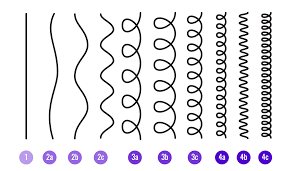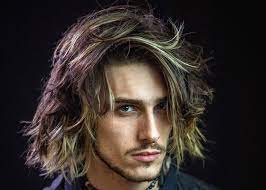
A Black hair Chart is an effective way of categorizing and identifying your hair texture. The system created by Andre Walker to market his products has since become part of how some African-American women speak about their own locks. This scale divides hair types into four general categories; straight (1-4a), wavy (2a-2c), curly (3a-3c), and kinky (4a-4c).
4A
Andre Walker, Oprah Winfrey’s hairdresser in the 1990s, created this system as a means to market his line of products; since then, it has become an invaluable way for many black people – from professional naturalists and TikTok influencers to those just starting their journey – to categorize their strands and tailor needs and products accordingly. Type 4A hair, also called tightly coily or “kinky,” features S-shaped coils in an S pattern, making it the driest of all four categories. Due to its tight waves, curly hair can become dry and vulnerable to breakage or scalp tension due to over-manipulation when wearing protective styles. Luckily, it’s one of the most accessible types to moisturize; just a tiny amount of leave-in conditioner and some light oil layering should keep it feeling healthy, bouncy, and lustrous!
4B
The 4B category is one of four black hair types described by Oprah Winfrey’s hairdresser Andre Walker in the 1990s. While Walker created his 1a-4c chart initially to promote his line of products, many Black women now use it to categorize their natural textures – from Black hairstylists and beauty influencers all the way down to members of the entire natural hair movement! Everyone from naturalists and influencers uses it to determine their curl pattern and the protective styles they need! However, the 4B hair type can often be misunderstood by those unfamiliar with its definition and characteristics. Many assume it refers to tight zig-zag patterns when 4B has large springy coils or what some call “teenie corkscrew” curls that appear when stretched. Luckily this modified chart illustrates what its actual appearance should look like (with exceptions being swapping out 4a for 4b and adding in 4c), helping clear up confusion regarding what kinky hair looks like.
4C
If you are involved with the natural hair movement, chances are you have heard about Oprah Winfrey’s hairdresser Andre Walker’s “hair-type scale.” While initially created for marketing purposes to sell his line of products to Oprah Winfrey’s salon, it has since become a way of categorizing Black hair textures. It has come under considerable criticism from some who feel that its use encourages “textures,” discrimination against curlier or more excellent surfaces in favor of looser textures, and reinforces notions that afro-textured locks are inferior. Hair that falls within the 4C category is tightly coily with an eight to 16-inch spring factor, creating mini ribbon curls or fluffy waves when fluffed up into a bun or space bun. No matter which way it’s worn, however, 4C hair requires more moisture than its other curly counterparts; in order to maintain optimal hydration levels, it’s wise to forgo heat-based styling tools in favor of protective styles like bantu knots or heat-free twists for best results.
5A
As the natural hair movement expands, more people are opting out of using chemicals and heat tools to straighten or wave their locks into desired styles. As such, many salons now specialize exclusively in caring for natural black hairstyles. Andre Walker’s hair chart, originally developed to market his product line to target audiences, has since become a standard way for many to categorize their natural hair textures. It divides into four overall categories – straight hair (1a-c), wavy (2a-c), curly (3a-c), and kinky (4a-c). While the system has proven beneficial to many, critics have accused it of being Eurocentric and propagating an assumption that curlier hair is easier to manage than straighter locks – this phenomenon is known as texture and affects far beyond just one hair product company’s policies.

